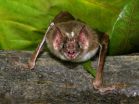(Press-News.org) A comparison clinical study of two aplastic anemia treatments found that ATGAM, currently the only licensed aplastic anemia drug in the United States, improved blood cell counts and survival significantly more than did Thymoglobulin, a similar but reportedly more potent treatment. The research was funded by the National Heart, Lung, and Blood Institute (NHLBI), a part of the National Institutes of Health; the study participants were treated and then followed at the NIH Clinical Center in Bethesda, Maryland.
The study will appear in the August 4 New England Journal of Medicine.
"This important study compared the clinical effectiveness of two drugs with similar mechanisms of action. Doctors and patients need to know the most effective therapy for severe aplastic anemia, a rare life-threatening disorder," said Susan Shurin, M.D., acting director of NHLBI.
While Thymoglobulin is not licensed for aplastic anemia in the United States, it has been reported to be effective when used in patients who did not respond or who relapsed following ATGAM treatment. Thymoglobulin is the only aplastic anemia option available in Europe, Japan, and Latin America. Thus, the findings of this study have implications for management of this disorder internationally.
"This study suggests that ATGAM should remain the first-line regimen of choice in treating severe aplastic anemia," said NHLBI hematologist Phillip Scheinberg, M.D., a lead author on the study.
Aplastic anemia is a rare blood disorder, newly diagnosed in approximately 600 patients in the United States every year. Most patients are children or young adults. The disease destroys bone marrow and lowers the number of functional blood cells in the body. Bone marrow failure can lead to anemia, hemorrhage, and increased risk of infections. In its severe form, aplastic anemia is often fatal if not treated. Aplastic anemia can occur for a number of reasons, including benzene exposure, radiation, hepatitis, or an inherited defect. In most cases, the patient's own immune system destroys the marrow.
ATGAM and Thymoglobulin are drugs known as antithymocyte globulins or ATGs. They work primarily by suppressing the immune system. ATGAM is derived from the blood of horses injected with human blood cells, while Thymoglobulin is derived from the blood of similarly immunized rabbits. Thymoglobulin's past positive results in relapsed patients, plus its preferred use in other clinical situations such as kidney transplants, suggested that it might be superior to ATGAM as a first therapy for aplastic anemia.
The NIH study was designed to compare the two ATG drug types as treatments for severe aplastic anemia. The research team enrolled 120 patients from 2 to 77 years of age, who were randomly assigned to either the horse or the rabbit ATG (60 participants in each group).
Six months after starting treatment, 68 percent of patients given ATGAM had improved blood cell counts, compared to 37 percent of patients given Thymoglobulin. After three years, survival was also significantly different. Ninety-six percent of ATGAM patients survived, compared to 76 percent of Thymoglobulin patients.
"It is difficult to do head-to-head studies in rare diseases such as aplastic anemia," Scheinberg said. "Our ability to carry out this trial underscores the importance of having referral centers, such as the NIH Clinical Center, for rare diseases. We would like to recognize and honor the patients who came to Bethesda for the frequent treatments and follow-up visits. Their tremendous cooperation and participation was essential in carrying out this study."
Scheinberg added that this study also shows the need to conduct randomized clinical trials for all drugs and to not just rely on assumptions, even if they are based on seemingly solid evidence. "A stronger drug is not necessarily a better drug."
This important finding may affect the future treatment of aplastic anemia, particularly in places like Europe where ATGAM is not currently available. It may also inspire further studies that compare horse and rabbit ATG to better understand how ATG helps restore bone marrow.
Since some patients responded very well to Thymoglobulin and others responded poorly to ATGAM, future work might identify the optimal ATG treatment for specific patient subgroups.
INFORMATION:
To schedule an interview with an NHLBI spokesperson, contact the NHLBI Office of Communications at 301-496-4236 or NHLBI_news@nhlbi.nih.gov
Resources:
What is aplastic anemia?
Horse versus Rabbit ATG study at clinicaltrials.gov
The National Heart, Lung, and Blood Institute (NHLBI) is a component of the National Institutes of Health. NHLBI plans, conducts, and supports research related to the causes, prevention, diagnosis, and treatment of heart, blood vessel, lung, and blood diseases; and sleep disorders. The Institute also administers national health education campaigns on women and heart disease, healthy weight for children, and other topics. NHLBI press releases and other materials are available online at: www.nhlbi.nih.gov.
About the National Institutes of Health (NIH): NIH, the nation's medical research agency, includes 27 Institutes and Centers and is a component of the U.S. Department of Health and Human Services. NIH is the primary federal agency conducting and supporting basic, clinical, and translational medical research, and is investigating the causes, treatments, and cures for both common and rare diseases. For more information about NIH and its programs, visit www.nih.gov.
END
BC Children's Hospital and University of British Columbia (UBC) researchers have found that two existing screening tests are accurate in diagnosing development delays in children and could be incorporated in a busy family practice setting with relative ease.
Parents can complete the Ages and Stages Questionnaire (ASQ) or the Parents' Evaluation of Developmental Status (PEDS) at home or in the family physician's office, with the physician scoring the tests and providing results in a matter of minutes.
"Only 30 per cent of children with developmental delays are identified ...
ANN ARBOR, Mich. — A new urine test can help aid early detection of and treatment decisions about prostate cancer, a study from the University of Michigan Comprehensive Cancer Center and the Michigan Center for Translational Pathology finds.
The test supplements an elevated prostate specific antigen, or PSA, screening result, and could help some men delay or avoid a needle biopsy while pointing out men at highest risk for clinically significant prostate cancer.
The test looks for a genetic anomaly that occurs in about half of all prostate cancers, an instance of two ...
SALT LAKE CITY, Aug. 3, 2011 – University of Utah scientists used chemical isotopes in ancient soil to measure prehistoric tree cover – in effect, shade – and found that grassy, tree-dotted savannas prevailed at most East African sites where human ancestors and their ape relatives evolved during the past 6 million years.
"We've been able to quantify how much shade was available in the geological past," says geochemist Thure Cerling, senior author of a study of the new method in the Thursday, Aug. 4, 2011 issue of the journal Nature. "And it shows there have been open ...
Scientists have known for years that when vampire bats tear through an animal's skin with their razor-sharp teeth, their noses guide them to the best spots – where a precise bite will strike a vein and spill forth nourishing blood. But nobody knew exactly how bats knew where to bite.
By investigating wild vampire bats in South America, researchers at the University of California, San Francisco and Instituto Venezolano de Investigaciones Científicas in Caracas, Venezuela have discovered their secret: a sensitive, heat-detecting molecule covering nerve endings on their ...
Cold Spring Harbor, N.Y. – Scientists at Cold Spring Harbor Laboratory (CSHL) and five other institutions have used an unconventional approach to cancer drug discovery to identify a new potential treatment for acute myeloid leukemia (AML). As reported in Nature online on August 3, the scientists have pinpointed a protein called Brd4 as a novel drug target for AML, an aggressive blood cancer that is currently incurable in 70% of patients. Using a drug compound that inhibits the activity of Brd4, the scientists were able to suppress the disease in experimental models.
"The ...
A new study shows for the first time that natural killer (NK) cells, which are part of the body's first-line defence against infection, can contribute to the immune response against HIV. In an article in the August 4 issue of Nature, a research team based at the Ragon Institute of MGH, MIT and Harvard reports that the HIV strains infecting individuals with particular receptor molecules on their NK cells had variant forms of key viral proteins, implying that the virus had mutated to avoid NK cell activity.
"This study suggests for the first time that NK cells can impose ...
This result comes just one year after the start of the VISTA Variables in the Via Lactea programme (VVV) [1], one of the six public surveys on the new telescope. The results will appear in the journal Astronomy & Astrophysics.
"This discovery highlights the potential of VISTA and the VVV survey for finding star clusters, especially those hiding in dusty star-forming regions in the Milky Way's disc. VVV goes much deeper than other surveys," says Jura Borissova, lead author of the study.
The majority of stars with more than half of the mass of our Sun form in groups, ...
Bremerhaven, 1 August 2011. For the first time researchers have examined on a global scale how calcified algae in their natural habitat react to increasing acidification due to higher marine uptake of carbon dioxide. In the current issue of the magazine Nature they explain that Coccolithophores, a certain group of algae, form thinner calcite skeletons when the pH value in the ocean drops. In marine ecosystems, changes in the degree of calcification are much more pronounced than presumed to date based on laboratory tests. These changes have an impact on the global carbon ...
SANTA CRUZ, CA--The mountainous region on the far side of the moon, known as the lunar farside highlands, may be the solid remains of a collision with a smaller companion moon, according to a new study by planetary scientists at the University of California, Santa Cruz.
The striking differences between the near and far sides of the moon have been a longstanding puzzle. The near side is relatively low and flat, while the topography of the far side is high and mountainous, with a much thicker crust. The new study, published in the August 4 issue of Nature, builds on the ...
Carbon dioxide remains the undisputed king of recent climate change, but other greenhouse gases measurably contribute to the problem. A new study, conducted by NOAA scientists and published online today in Nature, shows that cutting emissions of those other gases could slow changes in climate that are expected in the future.
Discussions with colleagues around the time of the 2009 United Nations' climate conference in Copenhagen inspired three NOAA scientists – Stephen Montzka, Ed Dlugokencky and James Butler of NOAA's Earth System Research Laboratory in Boulder, Colo. ...



